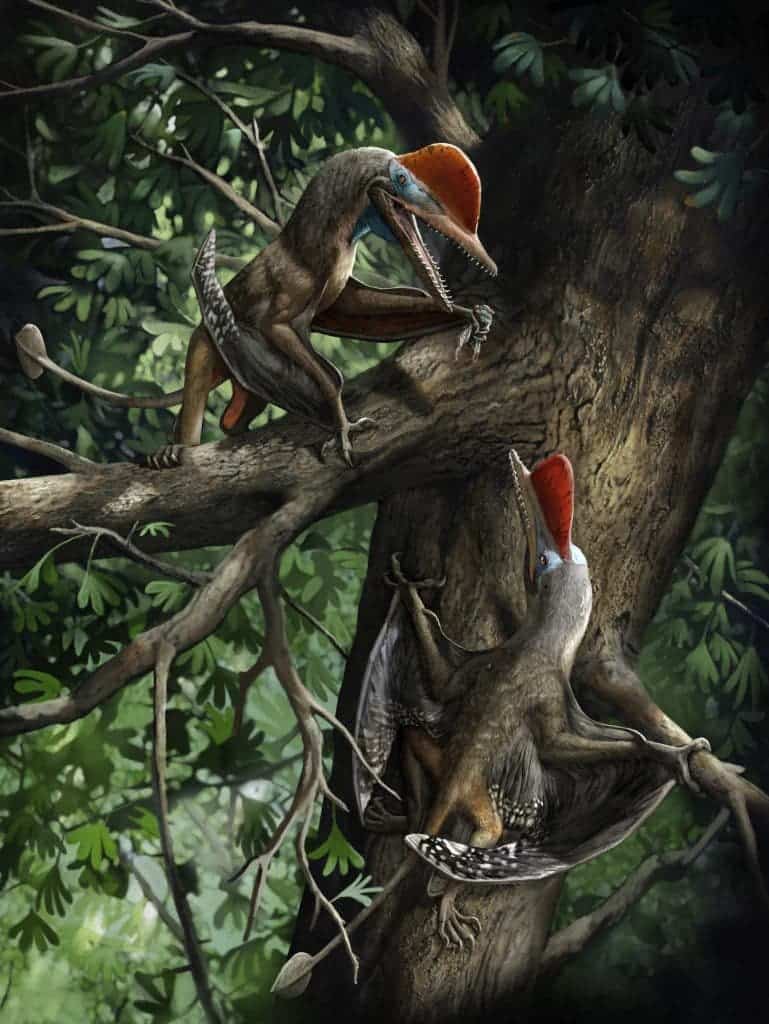Researchers have identified what is, perhaps, the oldest species to have evolved opposable thumbs; it was a dino.

The new species, christened Kunpengopterus antipollicatus, lived during the Jurassic era in what is today China. Its most peculiar feature was the presence of opposable thumbs on its forelimbs, making it the oldest known species (and the oldest known dinosaur) to evolve such a trait. Opposable thumbs, the kind we have on our hands, are a big part of humanity’s secret to success, and a rare occurrence in nature outside of the primate family. As such, it earned the animal the nickname of “Monkeydactyl”.
Thumbs up
“The fingers of ‘Monkeydactyl’ are tiny and partly embedded in the slab. Thanks to micro-CT scanning, we could see through the rocks, create digital models and tell how the opposed thumb articulates with the other finger bones,” co-author Fion Waisum Ma said in a statement. “This is an interesting discovery. It provides the earliest evidence of a true opposed thumb, and it is from a pterosaur — which wasn’t known for having an opposed thumb.”
If the fact that a dinosaur dared copy one of our trump cards isn’t enough, then know this: Kunpengopterus antipollicatus was also capable of flight, making it, objectively speaking, better than us. It used to live in the forest ecosystems of 160 million years ago, and its name antipollicatus means “opposite thumbed” in ancient Greek.
K. antipollicatus belonged to the darwinopteran branch of the pterosaur family, the first lineage of vertebrates that we known of which were capable of flight. The current species is the oldest pterosaur to show true opposable thumbs, which also makes it the first species we know of that evolved such a trait.
Fossils of the new species were discovered in the Tiaojishan Formation of Liaoning, China, in September 2019. The opposable thumbs (or “pollex”) on each hand were spotted through the use of micro-CT scans. The team believes this dino used its thumbs for climbing trees or grasping, which would also be a useful skill for an animal living in the canopies of trees. Its diminutive size — the whole animal had a wingspan of 33 inches at most — also suggests it was adapted to spending some or most of its time in trees.
“Darwinopterans are a group of pterosaurs from the Jurassic of China and Europe, named after Darwin due to their unique transitional anatomy that has revealed how evolution affected the anatomy of pterosaurs throughout time,” said co-author Rodrigo V. Pêgas. “On top of that, a particular darwinopteran fossil has been preserved with two associated eggs, revealing clues to pterosaur reproduction.”
” They’ve always been considered precious fossils for these reasons and it is impressive that new darwinopteran species continue to surprise us!”
The species was most likely adapted to life in the trees in order to escape predators and competitors, the team conclude, a tradition that birds have carried on through to this day.
The paper “A new darwinopteran pterosaur reveals arborealism and an opposed thumb” has been published in the journal Current Biology.


